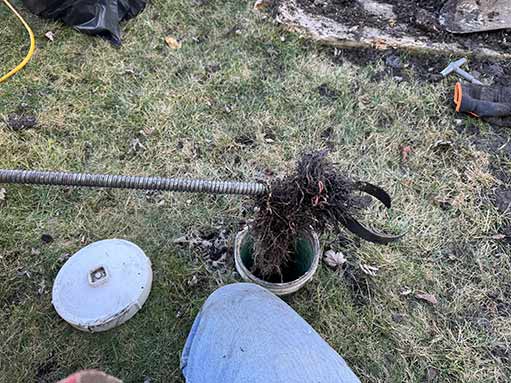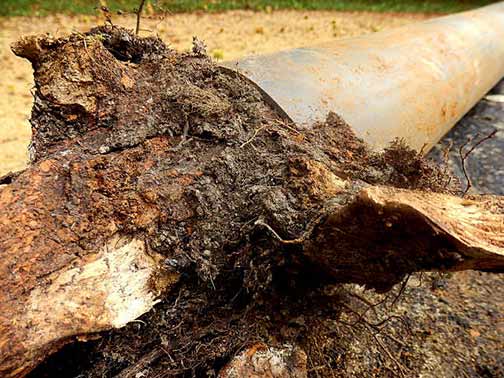Understanding Sewer Tree Root Intrusion
Tree root intrusion is a common and frustrating issue faced by many homeowners and municipalities. When tree roots invade sewer pipes, it can lead to clogging, blockages, and even pipe damage. This article will explore the key strategies and best practices for tackling the issue of sewer tree root intrusion.
The Impact of Sewer Tree Root Intrusion
Sewer tree root intrusion can have significant consequences on both residential and municipal sewer systems. Here are some of the main impacts:
- Clogging and Blockages: As tree roots grow and spread, they can obstruct the flow of wastewater through the sewer pipes. This can cause backups, slow drainage, and even sewage overflows.
- Pipe Damage: Over time, tree roots can exert pressure on sewer pipes, leading to cracks, fractures, and even complete pipe collapse. This can result in costly repairs and full sewer line replacements.
- Increased Maintenance Costs: Dealing with tree root intrusion requires frequent maintenance, such as root cutting and hydro jetting. These ongoing expenses can add up for homeowners and municipalities.
Key Strategies for Preventing Sewer Tree Root Intrusion
Prevention is crucial when it comes to sewer tree root intrusion. By implementing the following strategies, homeowners and municipalities can minimize the risk of root infiltration:
Selecting the Right Tree Species
One of the best ways to prevent sewer tree root intrusion is to choose tree species with non-invasive root systems. Certain trees, such as oak, maple, and pine, have less aggressive roots that are less likely to penetrate sewer pipes. Consult with a local arborist or horticulturist to identify tree species suitable for your area.
Maintaining Proper Distance
When planting trees on your property, it is essential to maintain a safe distance from sewer lines. The general guideline is to keep trees at least 10 feet away from any underground pipes. This will help minimize the risk of root intrusion as the trees mature.
Regular Inspection and Maintenance
Scheduling regular sewer line camera inspections and maintenance is crucial for early detection of tree root intrusion. Professional plumbers or sewer experts can use specialized equipment, such as CCTV cameras, to inspect the condition of the pipes and identify any root intrusions. Prompt action can prevent further damage and costly repairs.
Chemical Root Growth Inhibitors
Another preventive measure is the use of chemical root growth inhibitors. These products, typically in liquid or foam form, are applied to the sewer pipes. They work by creating a barrier that deters root growth. It is important to follow the manufacturer’s instructions and use these inhibitors judiciously, as excessive use may harm the tree itself.

Mechanical root cutting involves the use of specialized cutting tools to remove tree roots from sewer pipes.
Effective Techniques for Addressing Sewer Tree Root Intrusion
In cases where sewer tree root intrusion has already occurred, there are several techniques that can effectively address the issue:
Sewer Rodding
Sewer rodding involves the use of specialized service to remove tree roots from sewer pipes. This method can provide a temporary solution, but regular maintenance is necessary as the roots may regrow over time.
Hydro Jetting
Professional hydro jetting service is an effective technique for clearing out tree roots and debris from sewer pipes. It involves the use of high-pressure water to dislodge and flush out the roots. Hydro jetting not only removes the existing roots but also helps in cleaning the inner surface of the pipe, reducing the risk of future intrusions.
Pipe Relining
Pipe relining is a non-invasive method for repairing sewer pipes affected by root intrusion. In this technique, a flexible liner coated with resin is inserted into the damaged pipe. The liner is then inflated and cured, creating a new pipe within the existing one. This eliminates the need for extensive excavation and pipe replacement.
Pipe Replacement
In severe cases of root intrusion where the pipes are extensively damaged, pipe replacement may be necessary. This involves excavation and removal of the old pipes, followed by the installation of new pipes. It is recommended to contact a professional plumber to determine the most suitable pipe replacement method based on the specific situation.
Sewer tree root intrusion is a challenging issue, but with the right strategies and techniques, it can be effectively managed. By implementing preventive measures, such as selecting appropriate tree species and maintaining proper distances, homeowners and municipalities can significantly reduce the risk of root infiltration. In cases where intrusion has already occurred, sewer rodding, hydro jetting, pipe relining, or a full sewer pipe replacement can address the problem and restore the proper functioning of sewer systems.
Remember, early detection and timely action are vital in preventing further damage and minimizing maintenance costs. So, stay vigilant and take proactive measures to tackle the issue of sewer tree root intrusion.
